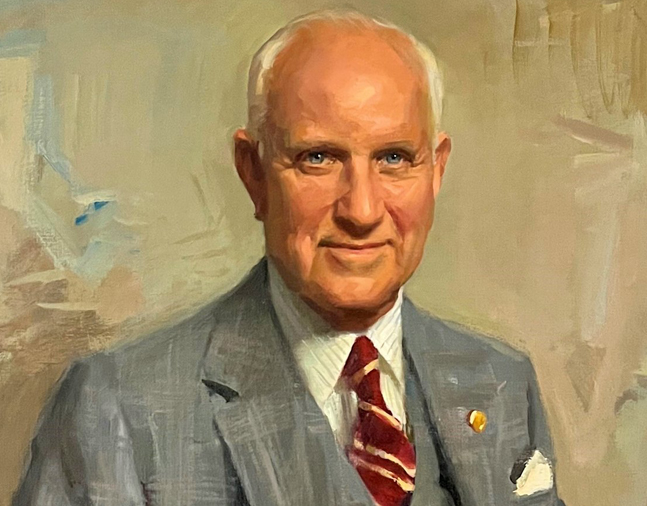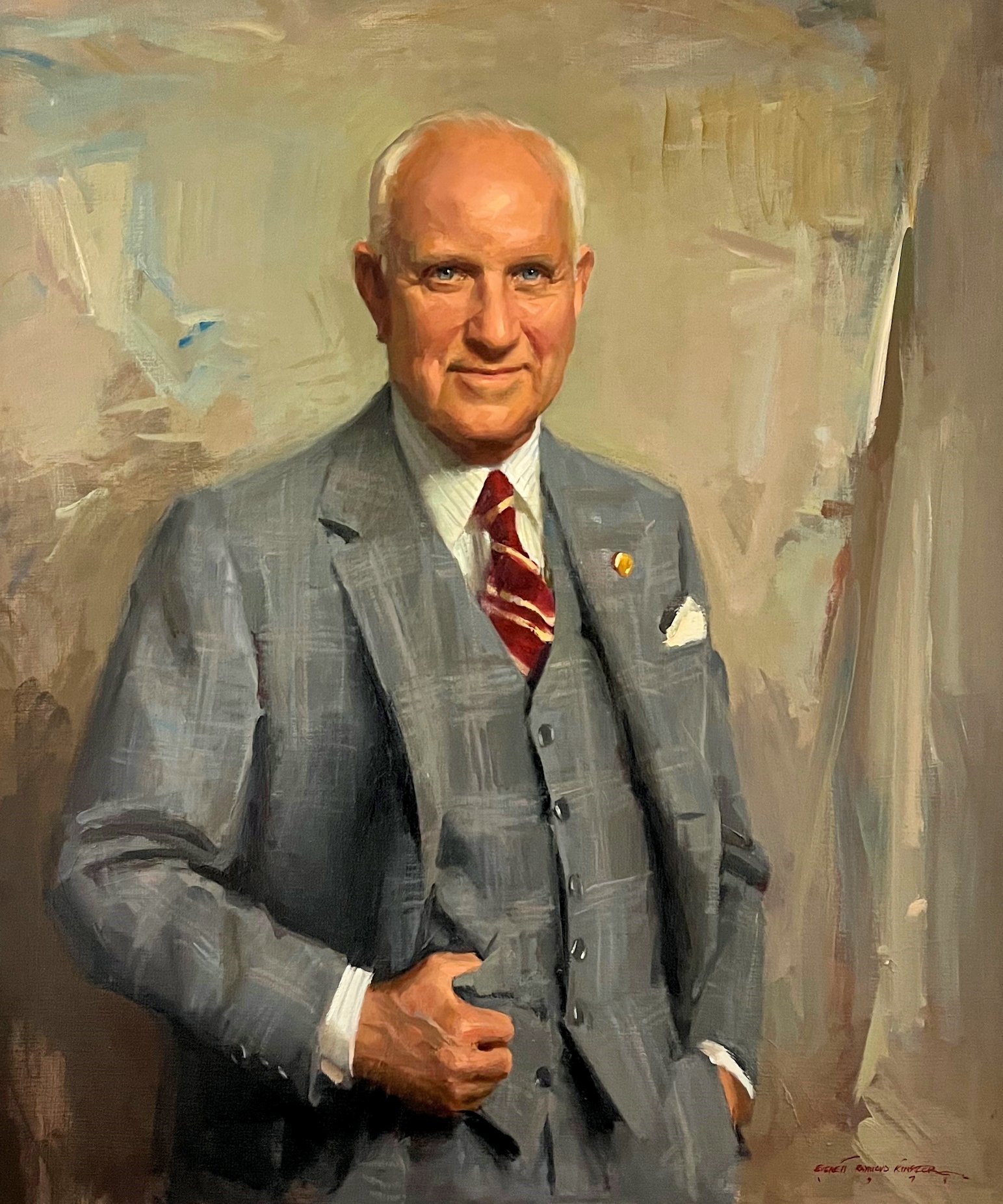Harry F. Guggenheim
Capt. Harry F. Guggenheim was a distinguished American in various in aspects of life in addition to becoming a highly significant international breeder and owner of thoroughbreds.

2024
Aug. 23, 1890, West End, New Jersey
Jan. 22,1971, Sands Point, New York
Biography
Capt. Harry F. Guggenheim was a distinguished American in various in aspects of life in addition to becoming a highly significant international breeder and owner of thoroughbreds.
As his name would hint, he was from the family renowned for the Guggenheim Museum of Art. In a diverging sphere, he was also a combat veteran in two wars and was regarded by Charles Lindbergh as one of the two most significant leaders in aeronautics of his era. The twists of life also placed Guggenheim in the position of a major newspaper publisher as well as a diplomat.
As a turfman, Guggenheim owned a winner of the Kentucky Derby, bred and owned champions, was North America’s leading owner one year, and led England and Ireland’s breeders another year. Along the way, he answered a call to help the industry. Guggenheim was one of a committee of three racing leaders whose vision rescued the nation’s most important racing circuit and created the New York Racing Association.
Guggenheim revered the thoroughbred and the sport of racing but always maintained it was appropriate to keep the activity from becoming his key business preoccupation. He remembered his father having written that, as he grew older, he realized “how much I miss in not having a hobby with which ... I might occupy myself.”
Harry Guggenheim entered the sport while in his 40s, and wrote years later that “I have always believed that racing should be a man’s outlet, even though it sometimes grows into big business. This isn’t to say that racing should not be taken seriously. It should be, but in my own case I wouldn’t want it to be my sole or even chief concern.” The place he gave the sport in his own life allowed him to comment, “I like my racing and everything to do with it.”
Guggenheim was born in West End, New Jersey, in 1890. He got a taste of racing as child by being taken to the old Sheepshead Bay track in New York. Later, while a student at Cambridge, he expanded his experience to include England’s Newmarket and the race courses of Paris. After graduation, he spent a few years in the copper division of Guggenheim Brothers and then settled into lengthy service in administrating philanthropies for the Guggenheim Foundation. The latter post involved a level of supervision of the Guggenheim Museum.
War interrupted, and he was a combat pilot in World War I. Afterward, his activities included establishing the Daniel Guggenheim Foundation (named for his father) promoting aeronautics. After Lindbergh’s historic trans-Atlantic flight in 1927, the pioneering pilot was engaged for a cross-country tour stressing the safety of air travel and the potential of commercial airlines. In the next decade, Harry Guggenheim guided the David Guggenheim Foundation into pioneering rocket research in support of Dr. Robert Goddard. Lindbergh rated Guggenheim and Goddard as the two most important visionaries in aeronautics.
Guggenheim went back to airborne combat during World War II, with distinguished service in Okinawa and Sakishima, and attained the rank of Captain. While that service overlapped with his developing a racing stable, his life certainly followed the credo of racing not dominating. In 1940, Guggenheim purchased the Long Island paper Newsday to support the profession of his third wife, the former Alicia Patterson. This project so engrossed Guggenheim that, on his wife’s death in 1963, he took over as editor and publisher for four years.
Guggenheim’s worldly view led to connection to foreign affairs. He once served as U.S. Ambassador to Cuba through appointment by President Herbert Hoover. Years later, in 1950, Guggenheim delivered a speech on cooperation among North American and South American countries. The address came to be looked upon as virtually an outline for the Organization of American States (OAS).
In his nearly four decades in racing, Guggenheim bred 43 stakes winners. Numerically, this is not a particularly impressive number compared to others who rose to high rank. However, from the beginning he tapped into bloodlines which developed into major and lasting influences, not only in America but also in Europe. The first purchase was a $1,400 yearling at the 1934 Saratoga sale. Named Touch and Go, this colt also became the first stakes winner for Guggenheim’s Falaise Stable. Before the 1930s were over, the purchase of the filly Red Eye for $850 resulted in a victory in the highly important Ladies Handicap. Moreover, Red Eye later produced Fantan, from whom Guggenheim bred Ragusa. A son of the great international champion and sire Ribot, Ragusa was sold to James Mullion as a yearling in Ireland. As a sophomore in 1963, Ragusa won the classic Irish Derby and English St. Leger as well as the King George VI and Queen Elizabeth Stakes. His earnings lifted Guggenheim to top rank among breeders in the British Isles for the year.
During the 1940s, Guggenheim changed his stable name to Cain Hoy. He had purchased a large tract of farmland in the low country of South Carolina. The area produces cane hay, which is used to make rattan furniture, and in the charming Gullah dialect of that area, cane hay is pronounced as “cain hoy.” Both the property and the racing stable were thus christened.
In 1951, Guggenheim’s yearling purchases included a $6,500 colt named Dark Star, who shockingly defeated Native Dancer as a 25-1 winner of the 1953 Kentucky Derby. Dark Star was injured in the Preakness and retired to become a moderately successful stallion. Guggenheim bred six of Dark Star’s 25 stakes winners, and three of them were high class: Iron Peg, who defeated Kelso in the Suburban Handicap; Kentucky Oaks winner Hidden Talent; and Matron Stakes winner Heavenly Body.
In the early 1950s, the New York State Racing Commission let it be known that if the leaders of New York racing could not fix a perceived decline in the sport, the state government would step in. Ogden Phipps, then vice chairman of The Jockey Club, turned to three paragons of American business who were also devoted to the sport of thoroughbred racing. Capt. Guggenheim was one of that committee, along with Christopher T. Chenery and John W. Hanes. The threesome recognized that the fragmentation of New York racing did not present an optimal prospect for prosperity. It was the opinion of the committee that a degree of consolidation was desirable. The plan was developed to purchase and close the New York track known as Jamaica. That would leave the state with two metropolitan tracks, Aqueduct and Belmont Park, and the popular upstate resort track of Saratoga. A quasi-governmental agency would be created for the purpose, and at the same time, the Aqueduct track would need massive renovation.
The plan, originally called the Greater New York Racing Association, was put into play. Eventually, the term “Greater” was omitted, with its potential confusion of indicating the city rather than the state. The streamlined New York Racing Association was brought to fruition. In 1959, a grand new version of Aqueduct reopened with the popular nickname of “The Big A” and, along with Belmont Park, conducted the calendar’s meetings in the New York City area. A traditional August respite for upstate Saratoga racing was continued, and the track and quality of meeting was upgraded.
The key years for Cain Hoy came during a phase when future Hall of Famers Woody Stephens (trainer) and Manuel Ycaza (jockey) were under contract to Guggenheim. The team statistically reached the top in American standings in 1959, as Cain Hoy was the leading owner with $742,081. The stars of that year included homebred Bald Eagle, who won the first of his two Washington, D. C., Internationals on turf, as well as major races on dirt. Bald Eagle then became the Champion Older Male in 1960. He sired the Guggenheim-bred San San, winner of France’s climactic Prix de l’Arc de Triomphe in 1972 in the colors of Countess Margit Batthyany.
Perhaps the most striking examples of enduring Cain Hoy bloodlines involve the family and achievements of the spectacular juvenile champion Never Bend. This saga embraces such great international runners and sires as Mill Reef and Galileo. Never Bend’s dam, Lalun, was produced by Col. E. R. Bradley’ s vaunted Idle Hour Stock Farm. The Bradley-bred Be Faithful was sold to John S. Phipps, and Guggenheim came into the picture by leasing her and seven other mares from Phipps. Be Faithful foaled Lalun, who would become one of four Kentucky Oaks winners raced by Guggenheim
Lalun’s son Never Bend, by the great sire Nasrullah, was the impressive Champion 2-Year-Old Male of 1962. While he did not succeed in winning a Triple Crown race, Never Bend won the Flamingo Stakes and had career earnings of $641,524. His 60 stakes winners included Mill Reef, who was bred in Virginia by Paul Mellon. Mill Reef paraded through victories in a series of the most important races in Europe, including the Epsom Derby, Prix de l’Arc de Triomphe, Eclipse Stakes, and King George VI and Queen Elizabeth Stakes. Mill Reef was a major sire of lasting influence in Europe, as was another son of Never Bend, the Guggenheim-bred Riverman.
The influence of Never Bend’s dam, Lalun, moreover, would see another lasting potency. Lalun’s stakes-winning son Bold Reason sired the filly Fairy Bridge. In turn, Fairy Bridge was destined to foal Sadler’s Wells, the 14-time leading sire in England whose own offspring included another epic stallion, Galileo.
In 1969, Guggenheim decided it was a proper time to step back from the demanding aspects of operating a breeding and racing operation. He staged dispersals at Keeneland and Belmont Park, where 137 head grossed $4,751,200, an average of $34,650. The gross topped by some $3,000 the previous record set over several years (1947-50) by the dispersal of horses owned by Louis B. Mayer. The Mayer sales, however, included 100-plus more horses, a total of 248.
Guggenheim did keep one runner, Ack Ack, along with a few stallion shares. A proven stakes winner, Ack Ack was in California with another Hall of Fame trainer, Charlie Whittingham. In January 1971, Ack Ack won the San Carlos Stakes at Santa Anita as a 5-year-old. Guggenheim, 80, passed away the following week.
Ack Ack was sold to E. E. “Buddy” Fogelson and his wife, the actress Greer Garson. Whittingham continued to train Ack Ack, who went on to earn Horse the Year honors in 1971. Typical of the history of Cain Hoy, Ack Ack had an impact on the breeding world. His 54 stakes winners included American champion and international winner Youth, in turn the sire of Epsom Derby winner Teenoso. Sons of Ack Ack also included Santa Anita and Suburban handicaps winner Broad Brush, himself America’s leading sire of 1994.
Media





